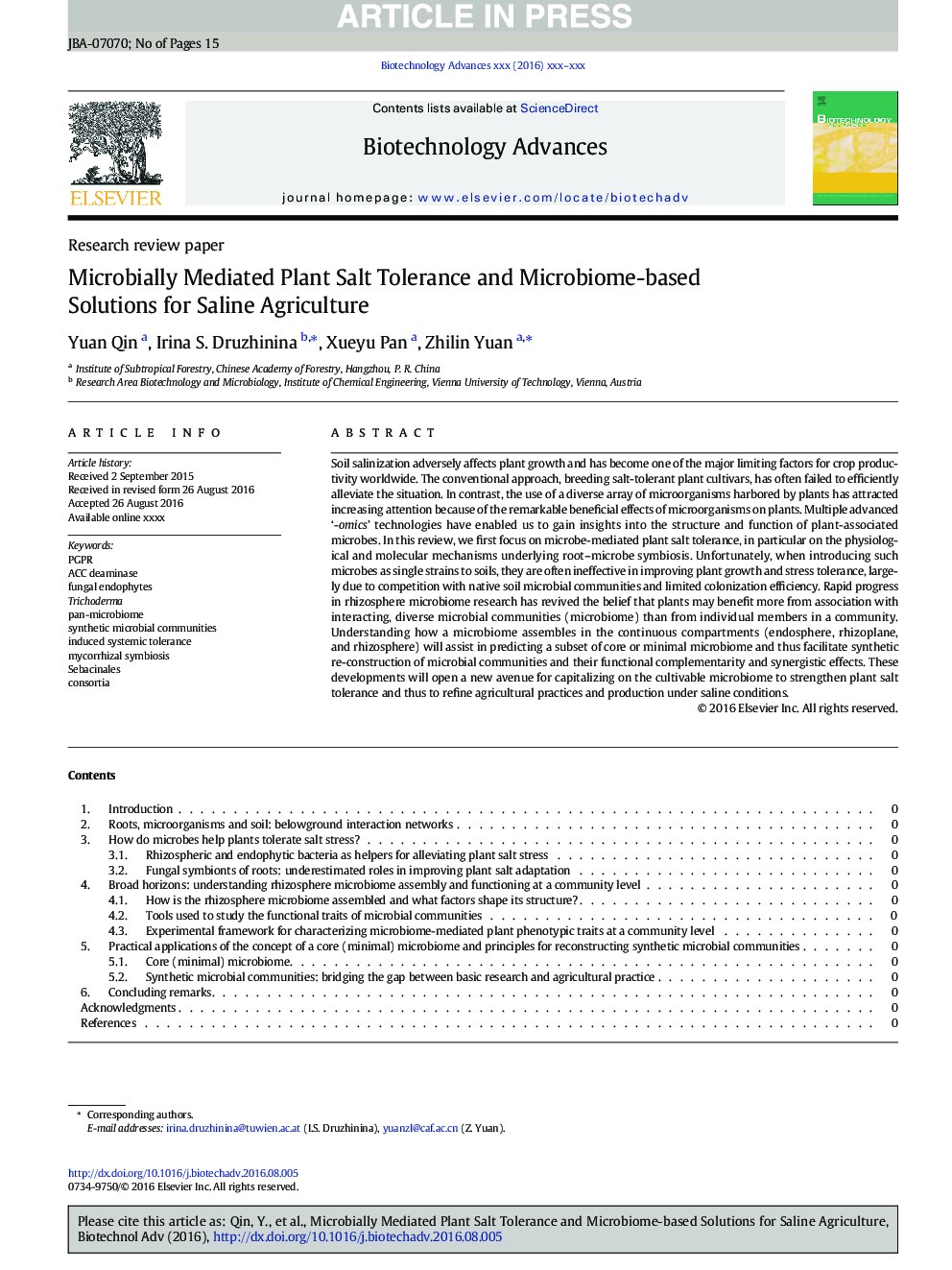| Article ID | Journal | Published Year | Pages | File Type |
|---|---|---|---|---|
| 4752542 | Biotechnology Advances | 2016 | 15 Pages |
Abstract
Soil salinization adversely affects plant growth and has become one of the major limiting factors for crop productivity worldwide. The conventional approach, breeding salt-tolerant plant cultivars, has often failed to efficiently alleviate the situation. In contrast, the use of a diverse array of microorganisms harbored by plants has attracted increasing attention because of the remarkable beneficial effects of microorganisms on plants. Multiple advanced '-omics' technologies have enabled us to gain insights into the structure and function of plant-associated microbes. In this review, we first focus on microbe-mediated plant salt tolerance, in particular on the physiological and molecular mechanisms underlying root-microbe symbiosis. Unfortunately, when introducing such microbes as single strains to soils, they are often ineffective in improving plant growth and stress tolerance, largely due to competition with native soil microbial communities and limited colonization efficiency. Rapid progress in rhizosphere microbiome research has revived the belief that plants may benefit more from association with interacting, diverse microbial communities (microbiome) than from individual members in a community. Understanding how a microbiome assembles in the continuous compartments (endosphere, rhizoplane, and rhizosphere) will assist in predicting a subset of core or minimal microbiome and thus facilitate synthetic re-construction of microbial communities and their functional complementarity and synergistic effects. These developments will open a new avenue for capitalizing on the cultivable microbiome to strengthen plant salt tolerance and thus to refine agricultural practices and production under saline conditions.
Related Topics
Physical Sciences and Engineering
Chemical Engineering
Bioengineering
Authors
Yuan Qin, Irina S. Druzhinina, Xueyu Pan, Zhilin Yuan,
